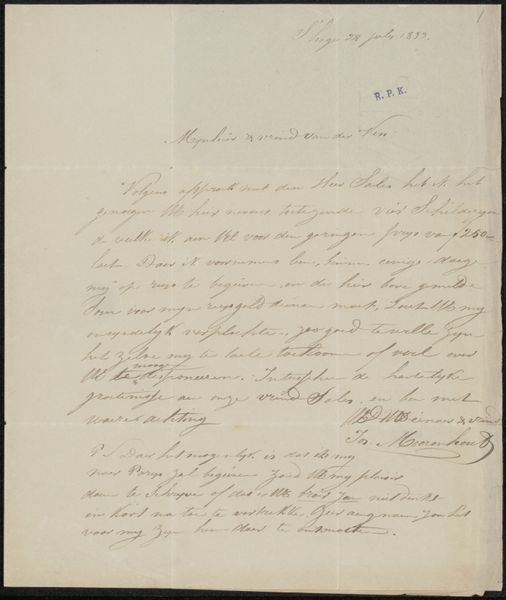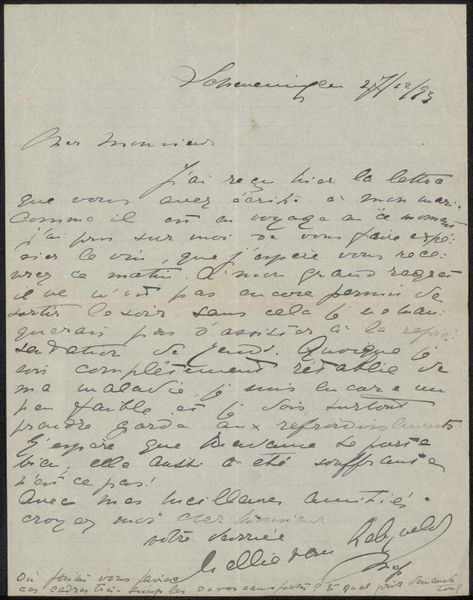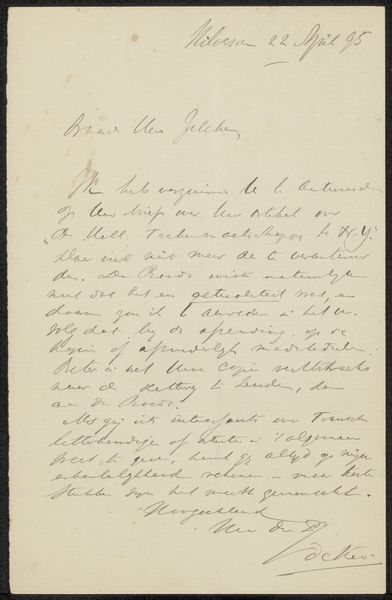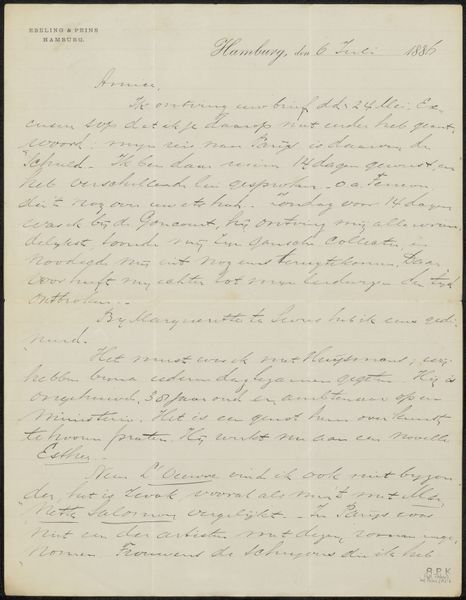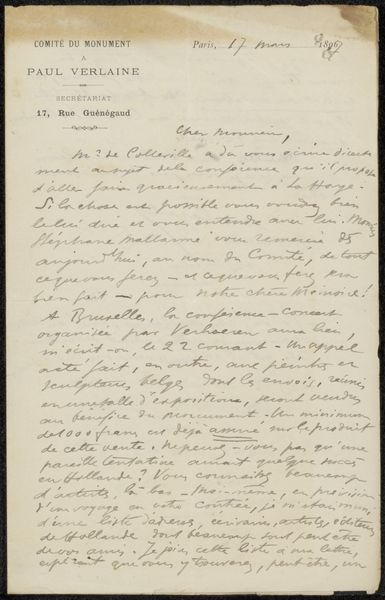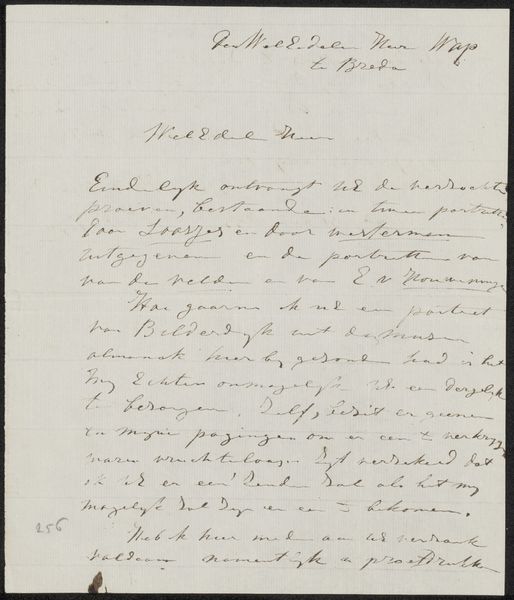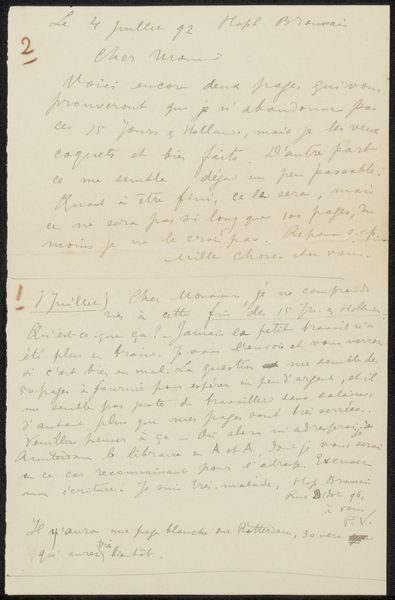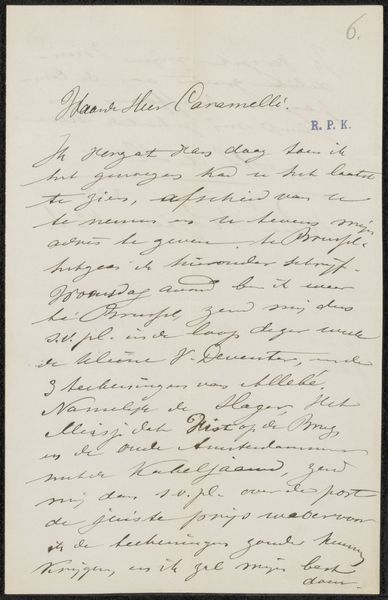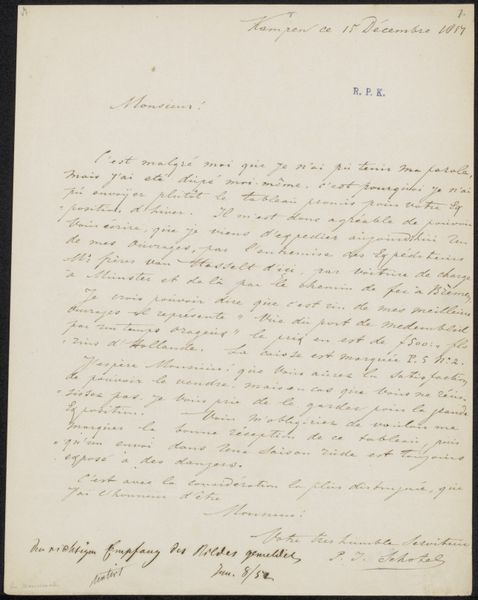
drawing, paper, ink
#
drawing
#
paper
#
ink
#
romanticism
#
calligraphy
Copyright: Rijks Museum: Open Domain
Curator: Here we have “Brief aan Christiaan Kramm,” or “Letter to Christiaan Kramm,” possibly from 1839. The work, housed in the Rijksmuseum, is ink on paper. Editor: The flow of the lettering really strikes me. It feels delicate, like a dance. I’m drawn into the script’s texture on the page, and I wonder about the hand that made it. Curator: Notice the meticulous arrangement, the careful strokes forming each character. The calligraphy reflects the Romantic era’s focus on the beauty of expression through formal control and refinement. It’s a testament to how language itself could be elevated to art. Editor: Absolutely, and consider the material conditions. The crafting of ink, the preparation of the paper – these processes involved skill and time. This was an act of creation in a very material sense. How would this differ depending on whether the writing instrument was, say, feather or steel? Curator: A good point. The very tools and materials shape the final outcome. This letter as object presents both the physical substance and its coded message. Editor: The social context is also crucial here. Letters were integral for communication at the time, a crucial tool. Analyzing them, in contrast to a drawing of landscape for example, roots it in human affairs. Curator: Indeed. Think of the constraints placed on artists as dictated by society and material availability, contrasted against a work like this one, with very clear conventions of style. It brings forth notions of authorship and skill within limitations. Editor: It reminds me to value not just what is communicated, but the physical and social processes that enable communication in the first place. Curator: And I'm newly attentive to the dialogue between freedom and form in artistic expression.
Comments
No comments
Be the first to comment and join the conversation on the ultimate creative platform.
